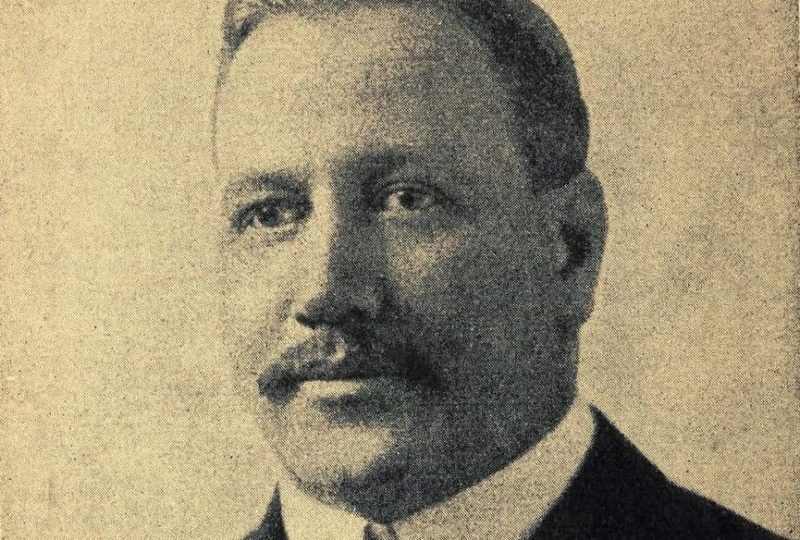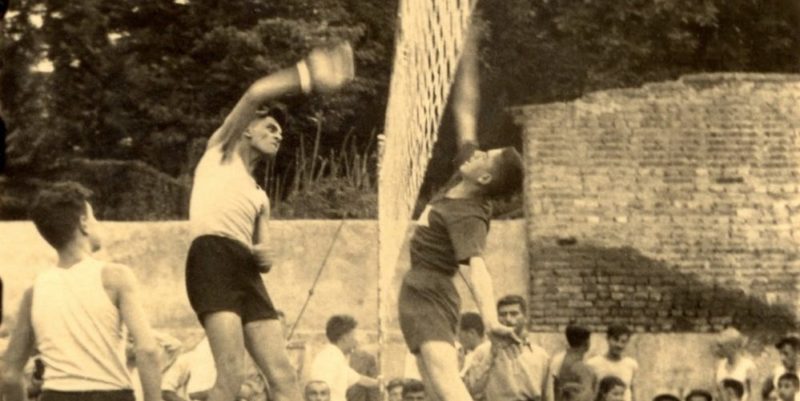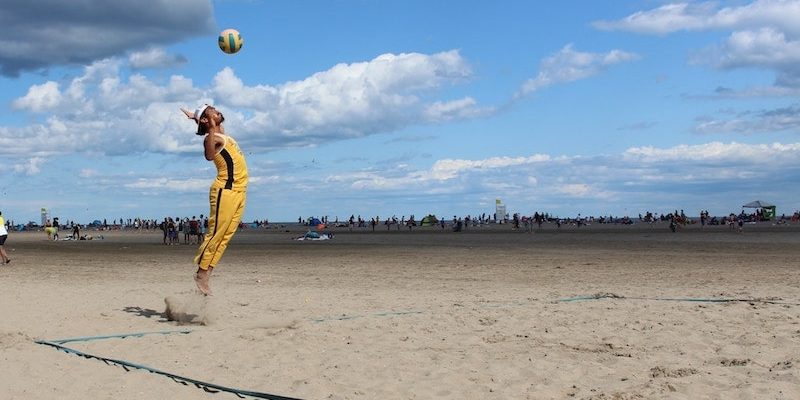We explain everything about the history of volleyball, its creation and development to the present day. Its rules and technical foundations.

history of volleyball
The name volleyball In Spanish (and its variants volleyball, volleyball, volleyball or volleyball), it derives from the English “volleyball”.” and refers to a discipline of more than one hundred years of existence that It was created in 1895 by William G. Morgan director of physical education at the Young Men's Christian Association (YMCA) in the United States.
It was originally called “mintonette” but, during a demonstration, they noticed that volleying the ball over the net described the essence of the game and that is why they began to call it “volley ball”. In 1952, the North American Volleyball Association unified the words to officially call it “volleyball.”
volleyball It is a sport that is played on a field divided in half by a net, where two teams face each other of six players each. The objective of the game is to pass the ball over the net so that it touches the ground of the opponent's field, without the opponent being able to reach it.
It is played by hitting or driving the ball and each team has a maximum of three touches to pass it to the opposing field. Players on the same team rotate their positions as they earn points.
See also: History of Basketball
Creator of volleyball

In 1870 William G. Morgan was born in Lockport, New York. During his childhood, he attended public school and worked in his father's shipyard on the banks of the old Erie Canal. Attending Mount Hermon Preparatory School in Massachusetts he met James A. Naismith, then a YMCA physical education teacher and creator of basketball.
Naismith was impressed with Morgan's athletic abilities and encouraged him to continue his education at the Young Men's Christian Association International Training School (now Springfield College). In 1894 Morgan graduated, and here the path that would culminate in the invention of volleyball would begin.
Origin of volleyball
In it 1895 William G. Morgan took over as director of physical education at the YMCA and ran into a problem, he had to provide the exercise without making it too aggressive or intense. He noticed that the game of basketball, despite being very popular, was too tiring.
I wanted an alternative that didn't require as much banging or shaking, so it would suit a broader audience. Morgan took ideas from various sports such as the basketball ball, the tennis net, the use of hands in handball and the concept of baseball innings. Thus, he created a discipline that he called “mintonette”.
A year later, the mintonette game proved very popular and gained an audience at the YMCA Physical Directors' Conference in Massachusetts. There, Dr. Alfred Halstead, a professor at Springfield College, observed that the highlight of the game was the volleying of the ball over the net. For this reason, he suggested renaming it “volley ball.”
In its origins, the “mintonette” was quite different from the volleyball performance that is known today. It was played on a smaller court, with a very heavy ball, a lower net and too many players hitting the ball an unlimited number of times.
Although Morgan probably didn't imagine it at the time, decades later volleyball became the second most popular team discipline in the world after football.
Global growth of volleyball

In its beginnings, the game of volleyball achieved wide acceptance thanks to the support and dissemination of the YMCA association, encouraged by two professional physical education schools: Springfield Collage and George Williams Collage.
In the early 1900s, Canada was the first foreign country to adopt the game as a sport to be practiced in various institutions. It was soon followed by Japan (1908) and the Philippines (1910), where it was included in the program of the first Far Eastern Games in 1913. Thus began its worldwide expansion.
In 1914 it was included in the education and recreation program of the North American armed forces. In 1916, the YMCA managed to get the powerful NCAA association (National Collegiate Athletic Association) to contribute to the rapid spread of volleyball among university students in the United States, through the publication of a series of articles on its regulations.
There it was announced, for example, that the number of players per team was limited to six and later, in 1922, the number of touches of the ball per play was limited to three. However, until the early 1930s, volleyball was a game of leisure and recreation, with few competitive presentations worldwide and with regulations that varied depending on the country where it was played.
In 1947, the International Volleyball Federation was created in France (FIVB). This global body is responsible for regulating standards at a competitive level and holding periodic meetings.
At the Paris Olympic Games in 1924, traditional volleyball was played for the first time as a demonstration sport. but just In 1964 it became part of the Olympic specialties at the meeting held in Tokyo.
Today volleyball is one of the most popular sports practiced worldwide, with competitions such as the FIVB World Championship, the FIVB World League, the FIVB World Grand Prix and the Olympic Games. It is a competitive sport of high physical and technical performance that presents some officially accepted variants:
- Beach volleyball It is played on the sand and has been part of the Olympic disciplines since 1996, starting with the meeting held in Atlanta that had a stadium specially built on the beach.
- Sitting volleyball It is practiced especially among sports for people with disabilities and in 1980 it was incorporated into the Paralympic Games.
Rules of the game

Among the basic rules of volleyball are:
- The score. The best score of five rounds of play, also called “sets”, is disputed. The team that accumulates three won sets will be the champion, for which it must reach twenty-five points in each set and with an advantage of two points over the opponent (for example, twenty-five against twenty-three points). If the teams reach a score of twenty-five against twenty-four, they must play until they achieve a difference of two points. This is why the length of volleyball matches varies so much.
- He take out It is the action that begins each game, it is carried out with the player located behind the baseline and the rest of the team located at the edges of the field. If a player serves and the opponent fails to save the ball, the player scores a point for his team. In the event that the serve is unsuccessful (it touches the net and falls in its own field or goes outside the area), the turn to serve passes to the opponent.
- Play area It is delimited by a rectangle eighteen meters long by nine meters wide, and is divided in the center by a network that separates the two playing areas. The designation of the fields for each team is drawn before the match and in each new set the areas are exchanged.
- Attack zone The center line located under the net divides the playing field into two equal zones, each nine meters by nine meters. Three meters away from the center line, another line delimits the attack zone for each area, where the players' actions are limited.
- The network It is located in the center of the playing field at a height of 2.43 cm for the men's category and 2.24 cm for the women's category. If the ball touches the net, it is not considered a foul and, when it rebounds, the play can continue.
Technical fundamentals of volleyball

The technical foundations of volleyball (or any other sport) are the basic principles for learning a discipline, and refer to the motor actions characteristic of the activity. In the case of volleyball, the following stand out:
- The serve There are two types of serve:
- From below. It is simpler and is used by beginners.
- From above It is an offensive technique and success depends on the force applied in the blow, which can be with the player standing or with the help of a jump in place.
- The player's posture There are three types of basic positions that differ in the degree of knee flexion (low, medium and high). This posture and its variants allow players to be alert and act quickly when the ball is received unexpectedly or at high speed by the opponent.
- The pass. There are different types:
- Finger pass Its main advantage is that it allows you to control the direction of the ball very well.
- Forearm blow Its main advantage is that it allows you to cushion balls that arrive at high speed.
- Auction It is the blow that is given accompanied by a jump, over the top of the ball, so that it reaches the ground of the opponent's field at high speed.
- Blockade It is a jump accompanied with extended hands, which must be performed very close to the net to avoid a shot from the opponent.
Most recognized countries in volleyball
The three countries that have won the most medals in international volleyball tournaments in recent years are: Brazil with twenty medals, Italy with fifteen and Russia with fourteen.
Continue with: Physical culture
References
- “Volleyball” on Wikipedia.org
- «History of volleyball» on AthleticScholarships.net
- «History of volleyball» in Fevochi.cl
- «FIVB History» on Fivb.org
- “What is Mintonette” in Difusionfractal.upnvirtual.edu.mx
- «The premiere of Olympic volleyball» in The marker of JMSurroca.blogspot.com
- «History of volleyball» on Volleyhall.org





